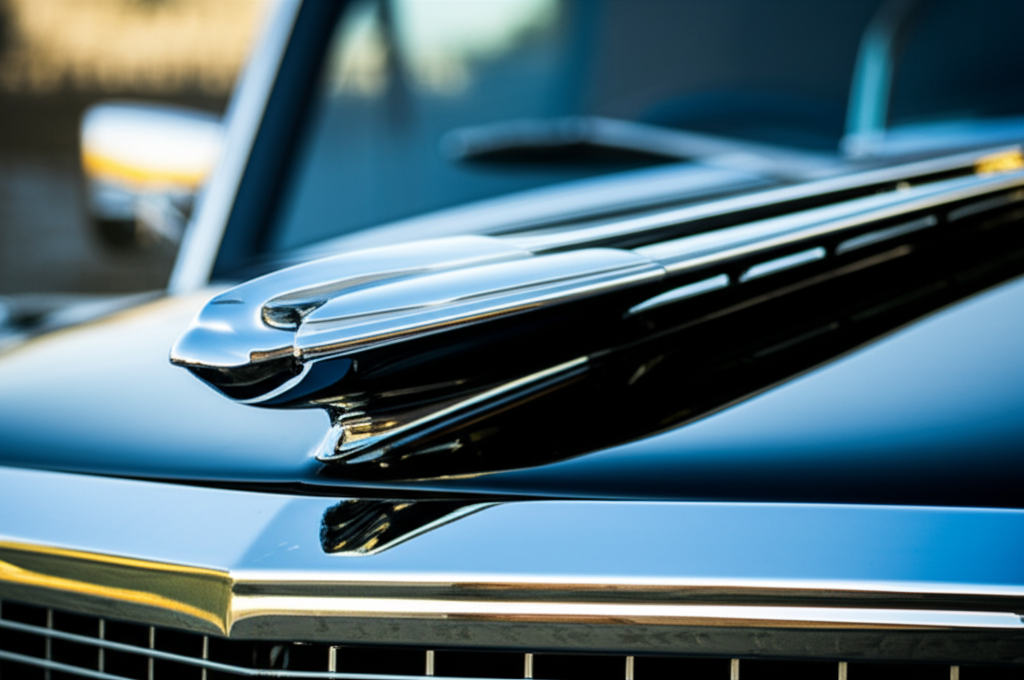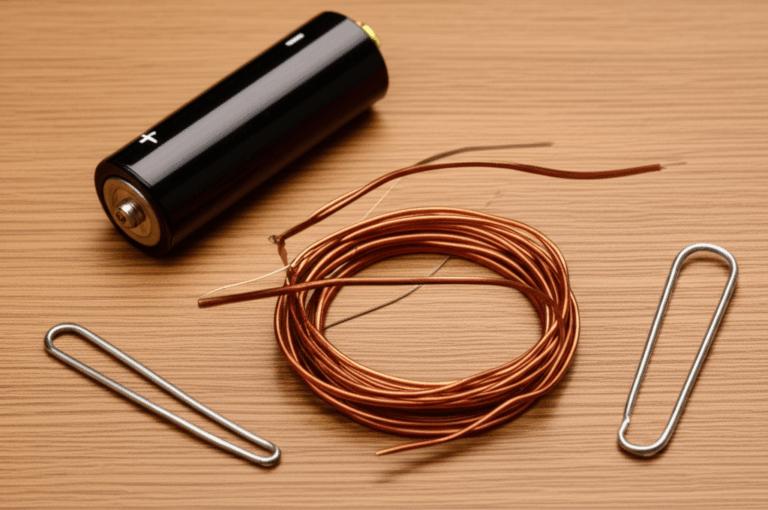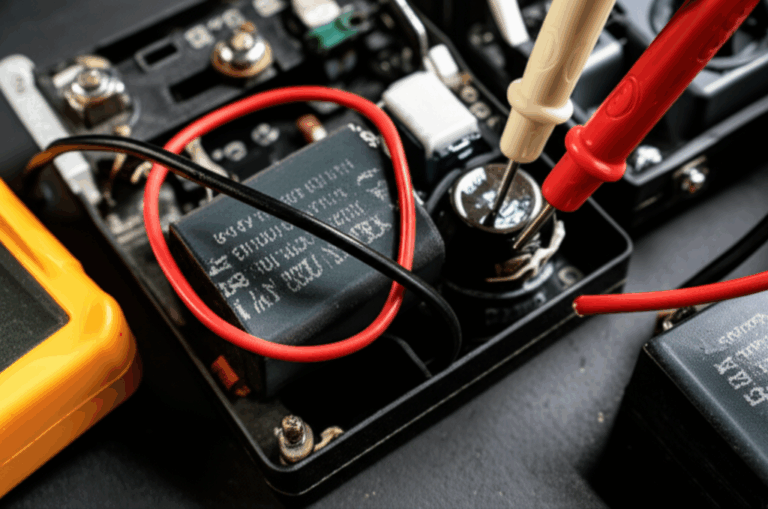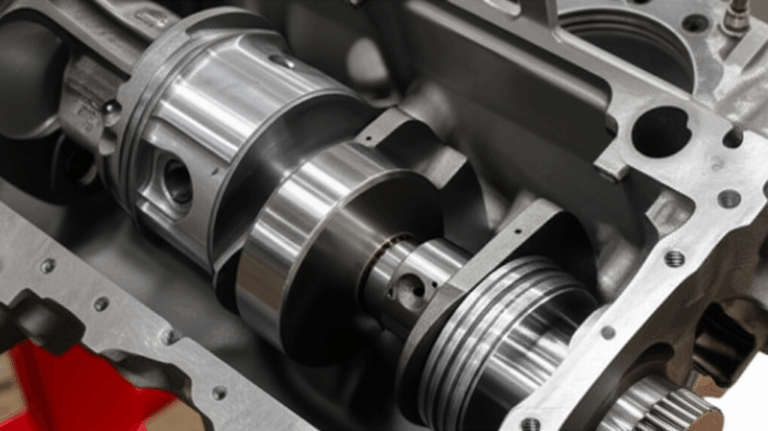
Does Ford Own Lincoln Motor Company? Yes, They Do.
Table of contents
- Introduction: The short answer and why it matters
- The historical acquisition: How Ford took over Lincoln
- Lincoln’s founding and early struggles
- Ford’s purchase in 1922 and the role of Henry and Edsel Ford
- Lincoln’s role inside Ford’s brand portfolio
- What it means to be Ford’s luxury division
- Shared platforms and technology without losing identity
- Design philosophy, brand differentiation, and the dealership experience
- Lincoln’s models and identity under Ford
- The icons: Continental, Town Car, and more
- The modern lineup: Navigator, Aviator, Corsair, Nautilus
- Electrification, connectivity, and future tech
- Why people still ask who owns Lincoln
- Separate branding can hide the parent company
- Industry consolidation and comparisons to Lexus, Audi, and others
- Perceived value, quality, and shared parts
- Buying insight: Are Lincolns just expensive Fords?
- What overlaps and what doesn’t
- Reliability, service, parts, and real-world differences
- Market positioning and who Lincoln competes with today
- The future of Lincoln inside Ford
- Investments, China’s importance, and leadership attention
- Challenges and opportunities in the luxury EV race
- Key dates and quick facts I keep in mind
- FAQs
- Conclusion
Introduction: The short answer and why it matters
I’ll cut to the chase. Yes, Ford Motor Company owns the Lincoln Motor Company. Ford has been Lincoln’s parent company for over a century. When people ask me “Is Lincoln owned by Ford?” or “Who owns Lincoln cars?” I answer yes and then I explain why it matters. The relationship between Ford and Lincoln shapes how Lincoln designs, engineers, and supports its vehicles. It also explains why Lincoln sits in the luxury vehicle segment while Ford targets the mainstream market.
I’ve spent years looking into automotive brand ownership because I hate confusion at the dealership counter. The more I learn the more I see a simple story. Ford bought Lincoln in 1922 to enter the premium segment and to compete head‑on with Cadillac. That decision still guides both brands today. If you want a luxury SUV like the Lincoln Navigator or Aviator you’re buying into Ford’s engineering muscle with Lincoln’s design flair and comfort focus layered on top.
The historical acquisition: How Ford took over Lincoln
Lincoln’s founding and early struggles
Lincoln didn’t start as Ford’s luxury badge. Henry M. Leland founded the Lincoln Motor Company in 1917 during World War I. At first Lincoln built Liberty aircraft engines. After the war ended Lincoln pivoted to luxury automobiles. That pivot proved tough. Early financial struggles pushed Lincoln toward receivership just a few years later.
Here’s a twist many people don’t know. Leland also founded Cadillac earlier in his career which later became part of General Motors under William C. Durant. So Lincoln and Cadillac share a founder even though they ended up in rival corporate families. That bit always fascinates me because it set up one of America’s defining luxury showdowns.
Ford’s purchase in 1922 and the role of Henry and Edsel Ford
Ford stepped in at the right time. On February 4, 1922, Henry Ford and his son Edsel Ford bought the bankrupt Lincoln Motor Company for about $8 million. That deal gave Ford an instant entry into the premium segment. It let Ford go toe‑to‑toe with Cadillac using a dedicated luxury marque rather than trying to stretch the Ford brand.
Edsel Ford deserves special credit. He had a keen eye for style and refinement. While Henry Ford focused on mass production and efficiency Edsel pushed Lincoln toward design-led luxury. In my experience this father‑son dynamic shaped Lincoln’s DNA. You can spot it in the elegant lines of the early Lincoln Zephyr and in the way modern Lincolns prioritize serene cabins and polished details.
Lincoln’s role inside Ford’s brand portfolio
What it means to be Ford’s luxury division
Lincoln sits as Ford’s luxury division and that position shapes everything. When someone asks “Lincoln parent company?” or “Is Lincoln still part of Ford?” the answer is straightforward. Lincoln is a wholly owned subsidiary of Ford Motor Company based in Dearborn, Michigan. Ford handles the heavy lifting around global manufacturing, R&D, and platform development. Lincoln takes those resources and focuses on luxury, comfort, premium materials, and a calmer driving experience.
In simple terms Ford covers the broad market and Lincoln covers the premium segment. That split helps Ford’s corporate portfolio since luxury vehicles often carry higher average transaction prices and better margins. This isn’t unique. Toyota does it with Lexus. Volkswagen Group does it with Audi. The strategy works when the brands feel distinct.
Shared platforms and technology without losing identity
People often ask “Are Lincoln vehicles Fords?” or “Are Lincoln and Ford parts interchangeable?” It’s true that Ford and Lincoln share platforms, powertrains, and networks behind the scenes. That’s how modern automakers control costs and move faster. For example the Lincoln Navigator rides on a platform closely related to the Ford Expedition. The Lincoln Aviator shares core architecture with the Ford Explorer. Under the skin you’ll find common components like engines, transmissions, and infotainment systems that have been tuned for each brand’s mission.
I’ve driven platform siblings back to back. The shared bones give both vehicles a strong base and that matters for safety and dynamics. Lincoln then layers in adaptive suspension tuning, upgraded NVH isolation, more sound deadening, and a different calibration for throttle and transmission shifts. You feel those choices on the road. The Lincoln aims for “serene and effortless” more than “sporty and taut.”
Design philosophy, brand differentiation, and the dealership experience
Lincoln talks about a “Quiet Flight” design philosophy. I like the phrase because it matches the experience. The cabins focus on calm and space with warm materials and intuitive controls. You also get a separate dealership and service experience. Programs like Black Label add curated themes, elevated materials, and perks that target premium buyers. This separation matters. It’s one reason some shoppers wonder if Lincoln is an independent company. It isn’t. The brand just works hard to feel distinct from Ford day to day.
Lincoln’s models and identity under Ford
The icons: Continental, Town Car, and more
If you love automotive history you probably know the Lincoln Continental. It stands as a symbol of American luxury design with countless appearances in culture and history. The Lincoln Town Car built a reputation as a plush sedan with a smooth ride and a trunk big enough for airport runs all day long. For decades Lincoln vehicles served as presidential limousines from Franklin D. Roosevelt to George H. W. Bush. That public presence cemented Lincoln’s image as a stalwart American luxury brand.
The modern lineup: Navigator, Aviator, Corsair, Nautilus
Today Lincoln leans into SUVs. The Navigator sits at the top as a full‑size luxury SUV. It’s the one I took on a long highway trip with my family and it impressed me with quiet road manners and confident power. The Aviator hits the midsize sweet spot with three rows and a more athletic stance than Navigator. The Corsair covers the compact luxury SUV segment. The Nautilus splits the difference in size and comfort between Corsair and Aviator. This shift mirrors the luxury market where SUVs dominate.
When I compare Lincoln vs other luxury brands I look at priorities. BMW, Mercedes‑Benz, and Audi lean sportier with firm suspensions and European dynamics. Lexus focuses on rock‑solid reliability and quiet comfort. Lincoln positions itself as serene, tech-forward, and distinctly American in feel. The Navigator and Aviator stand out as strong luxury SUV contenders and they compete directly with full-line rivals from Cadillac, BMW, Mercedes‑Benz, Audi, Acura, Infiniti, and even high-spec versions of mainstream SUVs.
Electrification, connectivity, and future tech
Electrification sits front and center in Ford’s long-term vision and that carries over to Lincoln’s plans. Lincoln has announced ambitions to move toward an all-electric lineup by 2030 with early EV launches expected mid‑decade. Ford’s broader EV strategy and divisions like Ford Blue on the internal combustion side give Lincoln a deep bench of engineering and software resources. In practice that means Lincoln can tap Ford’s battery development, electric motor design, charging partnerships, and driver-assistance platforms as it builds a luxury EV portfolio.
If you’ve never thought about what powers an EV beyond the battery you’re not alone. I used to think the same way until I dug into how electric motors deliver that smooth, instant torque. The heart of an EV motor relies on precisely engineered cores and laminations that reduce energy losses and noise. If you want a simple explainer you can look at how motor core laminations shape efficiency and thermal performance. Inside the motor the stator core lamination and the rotor core lamination work together to convert electrical energy into motion with minimal waste. Those assemblies use specialized electrical steel laminations to cut eddy-current losses which helps deliver that quiet, refined feel Lincoln aims for. You’ll never see these parts during a test drive yet they influence how premium an EV feels at speed.
Why people still ask who owns Lincoln
Separate branding can hide the parent company
I still hear “Is Lincoln an independent company?” or “Is Lincoln a premium Ford?” because the retail experience looks and feels separate. The showrooms are different. The advertising has a different tone. The models carry unique names like Navigator, Aviator, Corsair, and Nautilus rather than Ford-style alphanumerics or shared badges. That’s by design. The brand wants you to judge the product on its own merits while Ford remains the underpinning.
Industry consolidation and comparisons to Lexus, Audi, and others
The luxury market runs on umbrella ownership. Lexus belongs to Toyota. Audi belongs to Volkswagen Group. Acura belongs to Honda. Cadillac belongs to General Motors. Lincoln belongs to Ford. This landscape makes shoppers curious about who owns what and why. When I researched luxury brand ownership histories I noticed a clear pattern. Parent companies use shared engineering and global scale to reduce costs and then they build unique luxury experiences on top.
Perceived value, quality, and shared parts
A common question sounds like this. “If I buy a Lincoln am I just buying a more expensive Ford?” I understand that concern. Shared platforms and components do exist. The key lies in what Lincoln does with that foundation. The brand chooses different materials, different tuning, and different features. The result feels like a step up rather than a badge swap. Seat comfort, glass thickness, panel insulation, suspension calibration, and software features all come together to change how the car behaves. That’s where the luxury value shows up.
Buying insight: Are Lincolns just expensive Fords?
What overlaps and what doesn’t
I’ve crawled through cargo areas with a flashlight. I’ve watched technicians remove underbody panels. You can find shared parts between a Lincoln and its Ford platform mate. That’s normal. You’ll also find Lincoln‑specific modules, sound insulation, seats, and interior trim that change the experience. Even the same engine can feel different with revised mounts, intakes, and calibrations. Lincoln targets quietness and smooth torque delivery. Ford targets a broader balance of value, capability, and price.
Reliability, service, parts, and real-world differences
Shared parts can be a good thing for service and parts availability. Ford’s size gives Lincoln access to a deep dealer network and proven components. That often translates to faster service times and easier parts sourcing. I’ve had friends who owned Town Cars and Continental sedans for years because maintenance stayed straightforward and costs stayed reasonable compared to some European rivals. Reliability varies by model and year as you’d expect. The broader point holds. A large parent company can stabilize ownership costs in the long run.
Market positioning and who Lincoln competes with today
Lincoln aims at the luxury SUV heartland. Navigator competes with Cadillac Escalade and top-tier European three-row SUVs. Aviator goes up against BMW X5, Mercedes‑Benz GLE, Audi Q7, Acura MDX, and Infiniti QX60. Corsair competes with compact luxury crossovers like Lexus NX, BMW X3, and Audi Q5. Nautilus faces Lexus RX and similar mid‑sizers. That’s the competitive landscape. If you value serene cabins, user-friendly tech, and an American luxury vibe Lincoln hits the mark. If you want sharper handling and Autobahn swagger you might lean German.
The future of Lincoln inside Ford
Investments, China’s importance, and leadership attention
Lincoln’s global strategy focuses on North America and China. China has become a critical growth market for Lincoln with some region‑specific models like the Zephyr nameplate used there. This isn’t a side project. Leadership at Ford, including Bill Ford Jr. and CEO Jim Farley, has repeatedly emphasized the need to compete in premium segments because they drive brand halo and profitability. Lincoln contributes to Ford’s premium vehicle segment with higher average transaction prices and that helps the company’s overall financial performance.
Challenges and opportunities in the luxury EV race
The luxury EV market won’t be easy. Tesla changed expectations. European brands move quickly. Lexus and others push hard on reliability and refinement. Lincoln must carve out a space that feels modern and uniquely American without chasing every trend. In my view the opportunity sits right in Lincoln’s wheelhouse. Make electric SUVs that feel effortless, quiet, and comfortable. Lean into calming design. Use Ford’s EV engineering scale to keep prices competitive. Then polish the customer experience so ownership feels first class from start to finish.
Key dates and quick facts I keep in mind
- Lincoln founded in 1917 by Henry M. Leland and initially produced Liberty aircraft engines during World War I.
- Ford acquired Lincoln on February 4, 1922 for about $8 million to enter the luxury vehicle segment and compete with Cadillac.
- Edsel Ford led the early push to make Lincoln a design-forward luxury brand and his influence still echoes in the lineup.
- Lincoln’s iconic models include the Continental, Town Car, Mark Series, and Zephyr among others.
- Today the lineup focuses on SUVs: Navigator, Aviator, Corsair, and Nautilus.
- Lincoln’s presence remains strongest in the United States and Canada with a growing focus on China as a key luxury market.
- Recent sales hover near the 100,000-unit mark in the U.S. per year which keeps Lincoln in the conversation among American luxury car makers.
- Lincoln’s design philosophy “Quiet Flight” emphasizes serene luxury over sporty dynamics.
My firsthand take on the Ford–Lincoln relationship
When someone asks “How long has Ford owned Lincoln?” I say over a century. That kind of tenure matters because it shapes corporate culture. Ford built a reputation for robust engineering and high-volume manufacturing. Lincoln turned that scale into consistent luxury SUVs with a calmer vibe. The result isn’t perfect. No brand is. Yet the core idea makes sense. Lincoln leverages Ford’s research and development, shared platforms, and global logistics then it adds the luxury touches that define the experience.
A quick story. I once drove a Ford Explorer and a Lincoln Aviator on the same weekend over the same loop of highway and city streets. Both felt solid and confident. The Aviator felt more relaxed. The cabin stayed quieter over expansion joints. The seats carried me better on a two‑hour stretch into the suburbs. The audio system tuned the space with more depth. The Explorer made a strong argument for value. The Aviator made a strong argument for comfort and calm. That contrast explained the Ford–Lincoln relationship in a way spec sheets can’t.
Answering the most common questions I hear
- Is Lincoln owned by Ford? Yes. Lincoln is a subsidiary of Ford Motor Company.
- Who created Lincoln cars? Henry M. Leland founded Lincoln in 1917 before Ford bought it.
- Why did Ford buy Lincoln? To enter the luxury vehicle segment and compete with Cadillac which Leland also founded earlier.
- Are Lincoln vehicles just rebadged Fords? No. They share platforms and some components yet they differ in tuning, materials, features, and the overall experience.
- Does Ford make Lincoln engines? Ford’s powertrain family underpins many Lincoln models with calibrations and NVH work tailored for luxury.
- Is Lincoln still a luxury brand? Yes. Lincoln sits as Ford’s premium division and competes in the luxury vehicle segment.
- Are Lincoln and Ford parts interchangeable? Some are interchangeable at the platform level. Many interior and trim components are unique to Lincoln.
- What happened to Lincoln sedans? The market shifted to SUVs so Lincoln focused on Navigator, Aviator, Corsair, and Nautilus.
- Is Lincoln a dying brand? No. The brand continues to evolve with a focus on SUVs and electrification.
- How does Lincoln contribute to Ford? Through higher average transaction prices, brand halo, and a premium presence in the U.S. and China.
Deeper dive: Brand strategy, shared tech, and market positioning
- Ford’s brand architecture keeps Ford as the mainstream leader and Lincoln as the premium segment play. That’s why you see platform sharing alongside clear brand differentiation.
- Lincoln uses Ford’s R&D for safety systems, driver assistance, and infotainment. You see this in shared technology families that get tailored to Lincoln’s tone and interface.
- Platform sharing examples help explain the relationship. Navigator with Expedition and Aviator with Explorer stand out. The core chassis may be related. The execution isn’t the same.
- Lincoln’s target demographic wants calm luxury, modern tech, and an elevated dealership experience. It’s more about serene travel than track times.
- The luxury SUV market keeps growing. This puts Lincoln in a strong position with Navigator and Aviator where it already has brand recognition.
Regional perspective and global context
Lincoln’s strongest base sits in North America. The United States remains the key market and Canada adds a meaningful slice. China has become central to growth and brand visibility. I’ve watched Lincoln invest in products and retail that fit Chinese luxury expectations including a model strategy that sometimes differs from North America. That flexibility shows how a large parent like Ford can support region‑specific needs while keeping the brand’s identity intact.
Technology note: How shared engineering helps luxury
You might wonder why shared platforms matter so much. It’s simple. Engineering a modern vehicle from scratch costs billions. When Lincoln taps into Ford’s global engineering it can spend more time and money on luxury details like cabin refinement, advanced driver-assistance calibration, and design. That’s how you get better value in the premium segment without ballooning prices. The same logic applies to EVs where battery, software, and motor technologies demand huge investment. Shared foundations let Lincoln focus on the luxury experience that you can see, touch, and feel.
FAQs
Is Lincoln a premium Ford?
Yes. Lincoln is Ford’s luxury division. It uses Ford’s engineering base and adds luxury design, quieter cabins, premium materials, and upscale service.
Are Lincoln and Ford parts interchangeable?
Some parts interchange at the platform level. Many interior, trim, and tuning elements are unique to Lincoln which preserves the luxury feel.
Who is Lincoln’s biggest competitor?
It depends on the model. Cadillac stands as the closest American rival. In Europe and Japan the rivals include Lexus, BMW, Mercedes‑Benz, Audi, Acura, and Infiniti.
Is Lincoln still a luxury brand?
Yes. Lincoln remains a luxury automaker under Ford with a lineup focused on premium SUVs.
When did Ford acquire Lincoln?
Ford acquired Lincoln on February 4, 1922 and has owned it ever since.
Why did Ford buy Lincoln?
To compete in the luxury segment and expand Ford’s brand portfolio beyond mainstream vehicles.
Does Ford make Lincoln engines?
Ford’s powertrain family underpins many Lincoln models though Lincoln tunes calibrations and NVH for luxury.
Are Lincoln vehicles Fords?
They share corporate ownership and some engineering foundations. Lincoln vehicles stand apart through design, tuning, features, and materials.
Where is Lincoln headquartered?
Lincoln operates under Ford Motor Company which is based in Dearborn, Michigan.
How does Lincoln fit into Ford’s future EV plans?
Lincoln uses Ford’s EV platforms, battery tech, and software while shaping luxury‑focused electric SUVs with serene driving dynamics and premium cabins.
Conclusion
When someone asks me “Does Ford own Lincoln Motor Company?” I answer yes without hesitation. Ford acquired Lincoln in 1922 and has kept it as the company’s luxury division ever since. That relationship explains the shared engineering, the separate brand identity, and the premium experience you feel in modern Lincoln vehicles. It also sets up the future as Lincoln transitions toward electrification and deeper technology integration while staying true to its “Quiet Flight” ethos.
If you’re shopping for a luxury vehicle and you value calm cabins, refined ride quality, and a straightforward ownership experience Lincoln belongs on your list. You’re getting the scale and stability of Ford with a luxury focus that doesn’t try to be something it isn’t. That mix worked a century ago. It still works today.








